
Industrial materials and tools company Kennametal (NYSE: KMT) met Wall Street’s revenue expectations in Q1 CY2025, but sales fell by 5.7% year on year to $486.4 million. The company’s full-year revenue guidance of $1.98 billion at the midpoint came in 0.5% above analysts’ estimates. Its non-GAAP profit of $0.47 per share was 97.2% above analysts’ consensus estimates.
Is now the time to buy Kennametal? Find out by accessing our full research report, it’s free.
Kennametal (KMT) Q1 CY2025 Highlights:
- Revenue: $486.4 million vs analyst estimates of $488.8 million (5.7% year-on-year decline, in line)
- Adjusted EPS: $0.47 vs analyst estimates of $0.24 (97.2% beat)
- The company slightly lifted its revenue guidance for the full year to $1.98 billion at the midpoint from $1.98 billion
- Management raised its full-year Adjusted EPS guidance to $1.38 at the midpoint, a 17% increase
- Operating Margin: 9.1%, up from 6.8% in the same quarter last year
- Free Cash Flow was -$67.51 million, down from $48.46 million in the same quarter last year
- Organic Revenue fell 3% year on year (-1.9% in the same quarter last year)
- Market Capitalization: $1.53 billion
"During the quarter we demonstrated continued progress on our growth and cost initiatives despite weak market conditions, primarily in EMEA and the Americas," said Sanjay Chowbey, President and CEO.
Company Overview
Involved in manufacturing hard tips of anti-tank projectiles in World War II, Kennametal (NYSE: KMT) is a provider of industrial materials and tools for various sectors.
Sales Growth
A company’s long-term sales performance is one signal of its overall quality. Any business can put up a good quarter or two, but many enduring ones grow for years. Over the last five years, Kennametal’s demand was weak and its revenue declined by 1.1% per year. This was below our standards and is a sign of poor business quality.
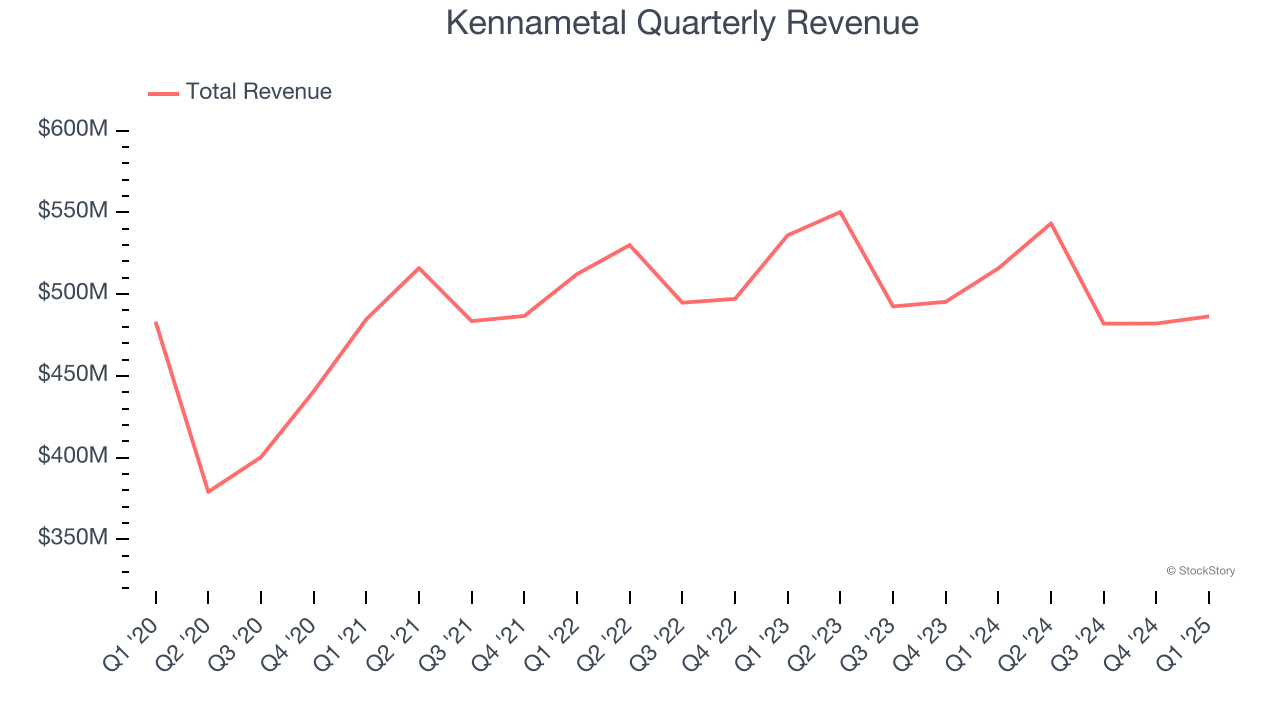
We at StockStory place the most emphasis on long-term growth, but within industrials, a half-decade historical view may miss cycles, industry trends, or a company capitalizing on catalysts such as a new contract win or a successful product line. Kennametal’s annualized revenue declines of 1.6% over the last two years align with its five-year trend, suggesting its demand has consistently shrunk. 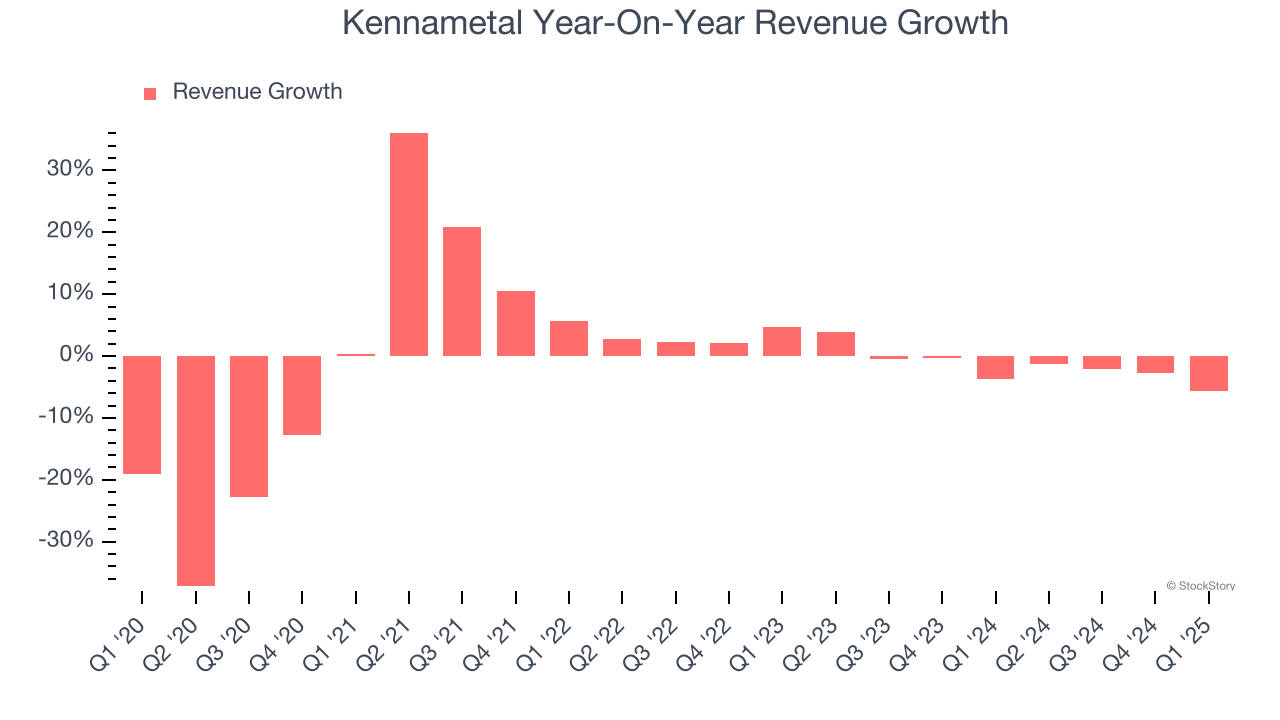
Kennametal also reports organic revenue, which strips out one-time events like acquisitions and currency fluctuations that don’t accurately reflect its fundamentals. Over the last two years, Kennametal’s organic revenue averaged 1.2% year-on-year declines. Because this number aligns with its normal revenue growth, we can see the company’s core operations (not acquisitions and divestitures) drove most of its results. 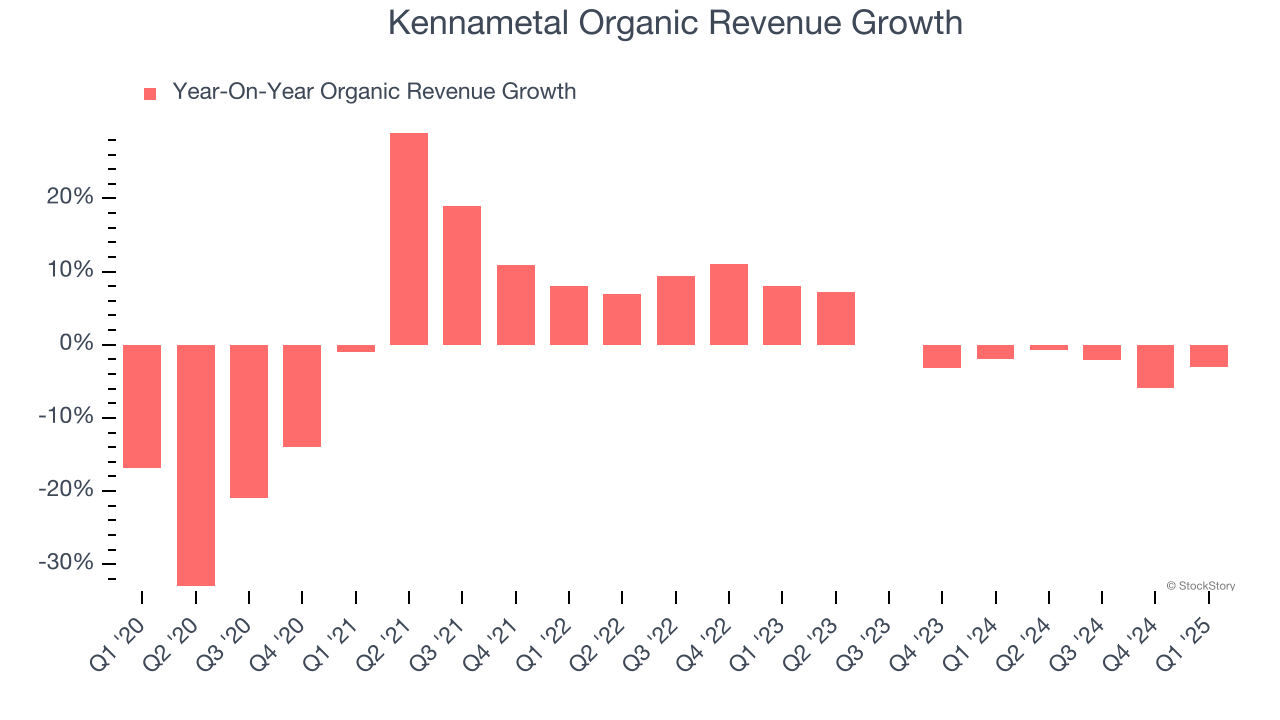
This quarter, Kennametal reported a rather uninspiring 5.7% year-on-year revenue decline to $486.4 million of revenue, in line with Wall Street’s estimates.
Looking ahead, sell-side analysts expect revenue to remain flat over the next 12 months. While this projection indicates its newer products and services will spur better top-line performance, it is still below the sector average.
Software is eating the world and there is virtually no industry left that has been untouched by it. That drives increasing demand for tools helping software developers do their jobs, whether it be monitoring critical cloud infrastructure, integrating audio and video functionality, or ensuring smooth content streaming. Click here to access a free report on our 3 favorite stocks to play this generational megatrend.
Operating Margin
Operating margin is one of the best measures of profitability because it tells us how much money a company takes home after procuring and manufacturing its products, marketing and selling those products, and most importantly, keeping them relevant through research and development.
Kennametal has done a decent job managing its cost base over the last five years. The company has produced an average operating margin of 8.3%, higher than the broader industrials sector.
Analyzing the trend in its profitability, Kennametal’s operating margin rose by 5.3 percentage points over the last five years, showing its efficiency has meaningfully improved.
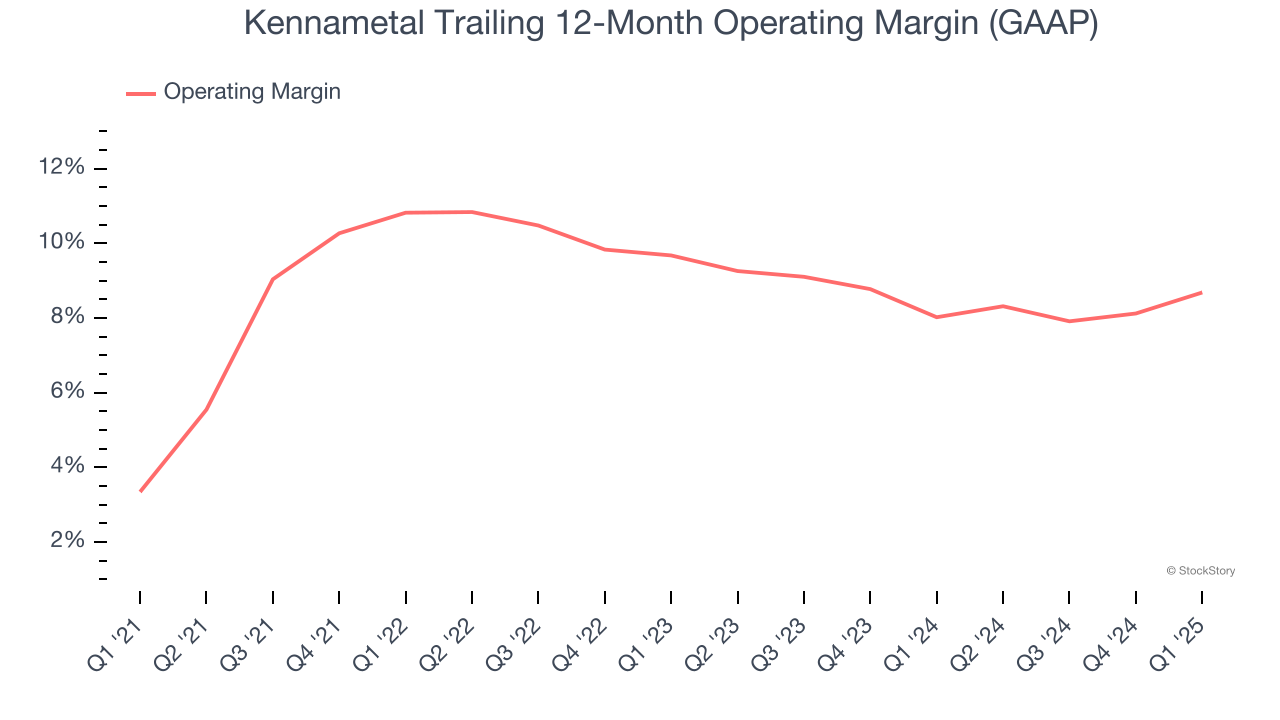
This quarter, Kennametal generated an operating profit margin of 9.1%, up 2.2 percentage points year on year. Since its gross margin expanded more than its operating margin, we can infer that leverage on its cost of sales was the primary driver behind the recently higher efficiency.
Earnings Per Share
We track the long-term change in earnings per share (EPS) for the same reason as long-term revenue growth. Compared to revenue, however, EPS highlights whether a company’s growth is profitable.
Sadly for Kennametal, its EPS and revenue declined by 1.7% and 1.1% annually over the last five years. We tend to steer our readers away from companies with falling revenue and EPS, where diminishing earnings could imply changing secular trends and preferences. If the tide turns unexpectedly, Kennametal’s low margin of safety could leave its stock price susceptible to large downswings.
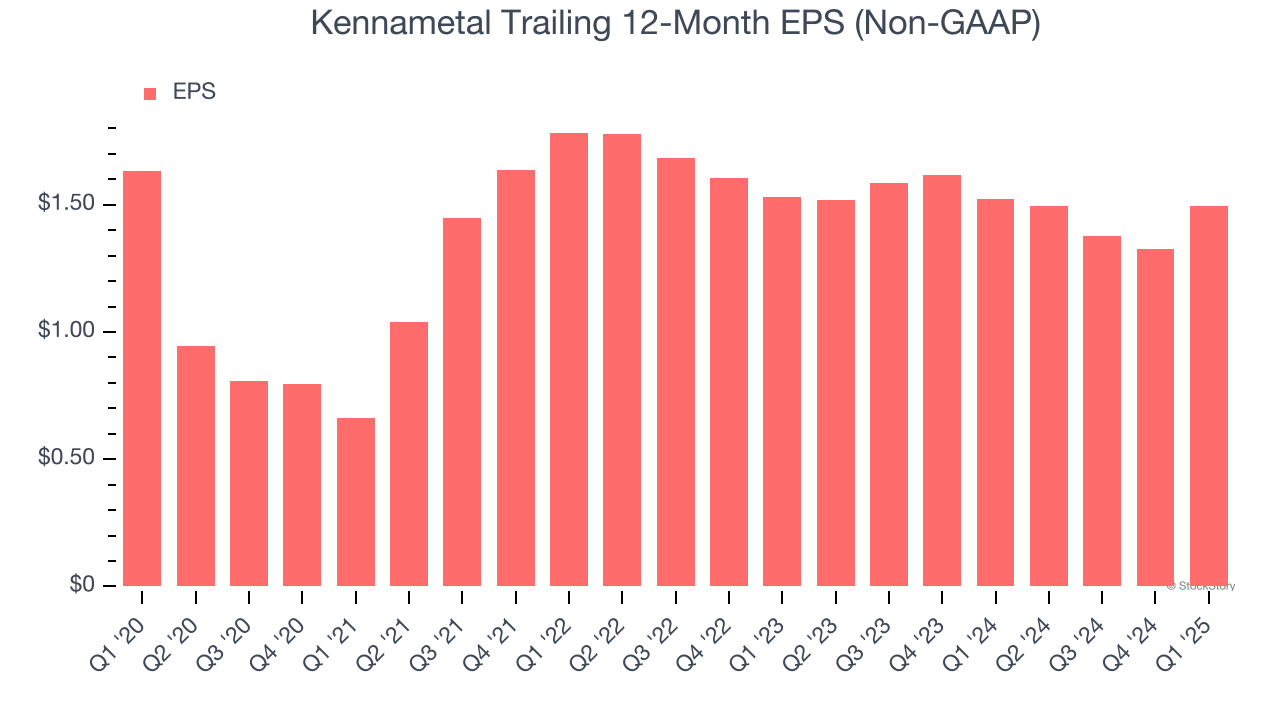
Like with revenue, we analyze EPS over a more recent period because it can provide insight into an emerging theme or development for the business.
For Kennametal, its two-year annual EPS declines of 1.1% are similar to its five-year trend. These results were bad no matter how you slice the data.
In Q1, Kennametal reported EPS at $0.47, up from $0.30 in the same quarter last year. This print easily cleared analysts’ estimates, and shareholders should be content with the results. Over the next 12 months, Wall Street expects Kennametal’s full-year EPS of $1.50 to shrink by 19.5%.
Key Takeaways from Kennametal’s Q1 Results
We were impressed by how significantly Kennametal blew past analysts’ EPS expectations this quarter. We were also glad its full-year EPS guidance trumped Wall Street’s estimates. On the other hand, its revenue was in line. Overall, we think this was a decent quarter with some key metrics above expectations. The stock traded up 6.5% to $21.09 immediately following the results.
Sure, Kennametal had a solid quarter, but if we look at the bigger picture, is this stock a buy? What happened in the latest quarter matters, but not as much as longer-term business quality and valuation, when deciding whether to invest in this stock. We cover that in our actionable full research report which you can read here, it’s free.







